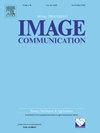CASK-Net fusion: Multi branch approach for cross-age sketch face recognition
IF 2.7
3区 工程技术
Q2 ENGINEERING, ELECTRICAL & ELECTRONIC
引用次数: 0
Abstract
Cross-Age Sketch Face Recognition targets the collective problem of Cross-Age Face Recognition (FR) and Sketch Face Recognition. Existing works discuss these problems individually, but no attempts towards collective version of these problems have been observed. In real life law enforcement, criminal and forensic investigations; the age and facial appearance of a subject may be different at sketch generation time and recognition time (present day). We therefore address this issue and propose a CASK-Net fusion approach to solve the collective problem of Cross-Age FR and Sketch FR. This paper presents a novel CASK-Net fusion architecture to capture discriminative features using multiple feature extractor branches including HOG, SIFT, CNN, LBP, ORB and Inception ResNetV2 (SOTA) respectively. The proposed approach grounds on extraction of age invariant features from sketch images of an individual for effective recognition. Our approach eliminates the requirement of modality conversion (sketch-photo) for recognition and provides less complex (transformation complexity is eliminated) solution. We also propose a benchmark Cross-Age Sketch (CASK) dataset to serve as a standard towards collective problem of Cross-Age FR and Sketch FR. The quantitative and ablation results highlight 95.52 % AUC-ROC performance and the fusion model achieved 93.37 % training accuracy (last epoch). Moreover, the SOTA comparison and dataset analysis confirms the model superiority with validation accuracy of 60.89 % on challenging and intrinsically hard CASK dataset.
CASK-Net融合:跨年龄素描人脸识别的多分支方法
跨年龄素描人脸识别的目标是跨年龄人脸识别和素描人脸识别的共同问题。现有的作品单独讨论这些问题,但没有尝试对这些问题的集体版本已被观察到。在现实生活中的执法、刑事和法医调查;在素描生成时间和识别时间(今天),受试者的年龄和面部外观可能不同。因此,我们解决了这一问题,并提出了一种CASK-Net融合方法来解决Cross-Age FR和Sketch FR的集合问题。本文提出了一种新的CASK-Net融合架构,分别使用HOG、SIFT、CNN、LBP、ORB和Inception ResNetV2 (SOTA)等多个特征提取器分支来捕获判别特征。该方法基于从个人素描图像中提取年龄不变特征来进行有效识别。我们的方法消除了对识别的模态转换(草图-照片)的需求,并提供了不太复杂(消除了转换复杂性)的解决方案。我们还提出了一个基准的跨年龄草图(CASK)数据集,作为跨年龄FR和草图FR集体问题的标准。定量和消融结果突出了95.52%的AUC-ROC性能,融合模型达到了93.37%的训练准确率(上一个epoch)。此外,SOTA对比和数据集分析证实了模型在具有挑战性和本质上困难的CASK数据集上的优越性,验证准确率为60.89%。
本文章由计算机程序翻译,如有差异,请以英文原文为准。
求助全文
约1分钟内获得全文
求助全文
来源期刊

Signal Processing-Image Communication
工程技术-工程:电子与电气
CiteScore
8.40
自引率
2.90%
发文量
138
审稿时长
5.2 months
期刊介绍:
Signal Processing: Image Communication is an international journal for the development of the theory and practice of image communication. Its primary objectives are the following:
To present a forum for the advancement of theory and practice of image communication.
To stimulate cross-fertilization between areas similar in nature which have traditionally been separated, for example, various aspects of visual communications and information systems.
To contribute to a rapid information exchange between the industrial and academic environments.
The editorial policy and the technical content of the journal are the responsibility of the Editor-in-Chief, the Area Editors and the Advisory Editors. The Journal is self-supporting from subscription income and contains a minimum amount of advertisements. Advertisements are subject to the prior approval of the Editor-in-Chief. The journal welcomes contributions from every country in the world.
Signal Processing: Image Communication publishes articles relating to aspects of the design, implementation and use of image communication systems. The journal features original research work, tutorial and review articles, and accounts of practical developments.
Subjects of interest include image/video coding, 3D video representations and compression, 3D graphics and animation compression, HDTV and 3DTV systems, video adaptation, video over IP, peer-to-peer video networking, interactive visual communication, multi-user video conferencing, wireless video broadcasting and communication, visual surveillance, 2D and 3D image/video quality measures, pre/post processing, video restoration and super-resolution, multi-camera video analysis, motion analysis, content-based image/video indexing and retrieval, face and gesture processing, video synthesis, 2D and 3D image/video acquisition and display technologies, architectures for image/video processing and communication.
 求助内容:
求助内容: 应助结果提醒方式:
应助结果提醒方式:


